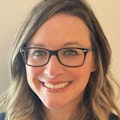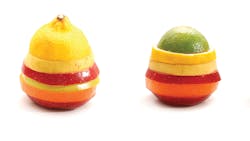The 5 layers of prevention: Helping patients fight dental disease by understanding their obstacles
When you hear the word prevention, what comes to mind? Is it brushing and flossing, an in-office fluoride treatment, or a 5000 ppm toothpaste for home care? Hopefully, it’s all these things. Prevention is critical to fighting caries and maintaining optimal gingival health.
These recommendations are important pieces of the prevention puzzle, but there is so much more to it. In the United States, dental caries remains the most common chronic disease in children and adults, although it is largely preventable.1 According to the Centers for Disease Control and Prevention (CDC), in a survey conducted between 2015–2018, the percentage of children between the ages of 5 and 19 with untreated dental caries was 13.2%.2 In that same survey, adults between the ages of 20 and 44 with untreated dental caries was 25.9%.2 We can see from this data that untreated dental caries is a problem for many Americans. This is a public health matter that takes understanding and innovation to help improve patients’ oral health and quality of life.
There is much to consider when talking to patients about prevention of dental disease. Helping them access care and achieve optimal oral health, which we know leads to better overall health, is one of the most important aspects of our job. As a hygienist who’s worked in private and public health, I’ve seen varying perspectives when it comes to patients receiving oral health services and their ability to receive our oral health messages.
There are layers to prevention, and I’ve broken it down into five pillars.
- Access to care and professional dental visits
- Diet, including access to healthy foods and fluoridated water
- Primary prevention methods and home care
- Risk assessments and treatment recommendations
- Education and awareness of oral health literacy
Access to care and professional dental visits
Access to care is a message we hear repeatedly. Not everyone has access to professional dental care, which is why we must be innovative in how we address this problem. It’s essential to think outside the box about how to bring care to those in need. Mobile and teledentistry services offer a great solution. School-based programs, nursing home services, and even “dental at your door” address access to care issues.
More by Brooke Crouch
Dry mouth relief: 9 products for treating xerostomia
Meeting the dental needs of an aging population
Remote dental hygiene services are an important aspect to increasing access to care. If this is something you’re interested in, read your state practice laws and seek out people practicing in remote settings. Many hygienists are paving the way and are happy to connect with you. The goal of the American Mobile and Teledentistry Alliance is to connect mobile providers to education and resources. The National Mobile and Teledentistry Conference each March allows you to connect with mobile providers, learn about existing possibilities, and how to impact this pillar of prevention.
Diet, including access to healthy foods and fluoridated water
We know how diet impacts a person's risk for dental decay and its role in prevention. Most of our patients understand this. But do your patients have access to healthy foods and fluoridated water? Consider whether they have access to safe tap water with therapeutically adjusted amounts of fluoride for topical and systemic benefits of caries prevention. Make appropriate suggestions if the answer is no.
A food desert is an area that has difficulty accessing healthy foods.3 Supermarkets and farmer’s markets offer a wide selection of fresh fruits and vegetables. However, many Americans in low-income areas often do not have access to a supermarket. They may rely on convenience stores for their groceries, and most of those do not offer fresh fruits or vegetables. The United States Department of Agriculture (USDA) defines a food desert when a census tract meets the following criteria:3
- Low-income community: Poverty rate of 20% or higher, or a median family income at or below 80% of the statewide median family income
- Low-access community: Urban census tracts with more than 33% living more than one mile from a supermarket or large grocery store, or rural census tracts (geographical region containing 1,000 to 8,000 people) that are more than 10 miles from a supermarket or large grocery store.
While practicing in Roanoke, Virginia, I served many people who lived in a food desert. It’s important to be mindful of this when talking to them about their food choices.
Primary prevention methods and home care
Primary prevention methods and home care are some of the best tools we have when it comes to preventing disease. This is where the recommendations mentioned at the beginning of this article come into play, such as discussing brushing and flossing habits or the use of a water flosser at home. We can recommend an in-office fluoride treatment or the use of a 5000 ppm toothpaste. This leads us into our next pillar of prevention, risk assessments.
Risk assessments and treatment recommendations
Do you remember risk assessments in hygiene school? We assessed our patients’ caries and periodontal risk factors every single recall. However, using a formal risk assessment tool is not a widespread practice. We’re always assessing our patients’ risk. We do it every time we review their medical history, but are we documenting it?
There are actual codes based on patients’ risks that may allow their services to be covered by insurance, for example, a fluoride varnish application. The ADA’s Current Dental Terminology (CDT) added these caries management by risk assessment (CAMBRA) codes in 2014.4 Each insurance company is different, but if you’re already assessing risk, consider documenting their risk code. It may help prevent disease.
Education and awareness of oral health literacy
I spent a lot of time in the public sector on oral health education. Not everyone grew up with an emphasis on their oral health or with an understanding that their oral health could impact their overall health. Most patients still do not understand the danger of sipping sugar-sweetened beverages throughout the day.
It’s important to understand patients’ oral health literacy and to not overwhelm them with too much information. Sharing small amounts of information at each visit will have a greater impact on patients with a low oral health literacy. Small pieces of information that patients can implement into their lives will build confidence and strengthen their oral health.
As a preventive care consultant for Elevate Oral Care, I speak to offices every day about prevention and how to practice it with their patients. Hearing the many ways dental providers approach prevention in their operatories, coupled with my experience in public health, shows the different perspectives we all bring when we talk prevention. I hope you've learned something new and will take it with you in your next prevention conversation.
Editor's note: This article appeared in the October 2022 print edition of RDH magazine and has been updated as of March 2025. Dental hygienists in North America are eligible for a complimentary print subscription. Sign up here.
References
- Dental caries (tooth decay). National Institute of Dental and Craniofacial Research. July 2018. https://www.nidcr.nih.gov/research/data-statistics/dental-caries
- Oral and Dental Health. Centers for Disease Control and Prevention. February 2022. https://www.cdc.gov/nchs/fastats/dental.htm
- What is a food desert? University of Nevada, Reno. 2022. https://extension.unr.edu/publication.aspx?PubID=2484
- CDT 2014. Dental Procedural Codes. American Dental Association. 2013. https://www.ada.org/publications/cdt/icd-and-cdt-codes
About the Author

Brooke Crouch, RDH
Brooke Crouch, RDH, is a registered dental hygienist with over fourteen years of clinical experience, both in private practice and public health. As a high-risk patient herself, with Sjogren’s Disease, she understands the need to be the patient’s advocate and to provide evidence-based preventive options. Brooke is proud to serve as the Professional Education Specialist for Elevate Oral Care and serves on the ADEA Corporate Council Administrative Board.
